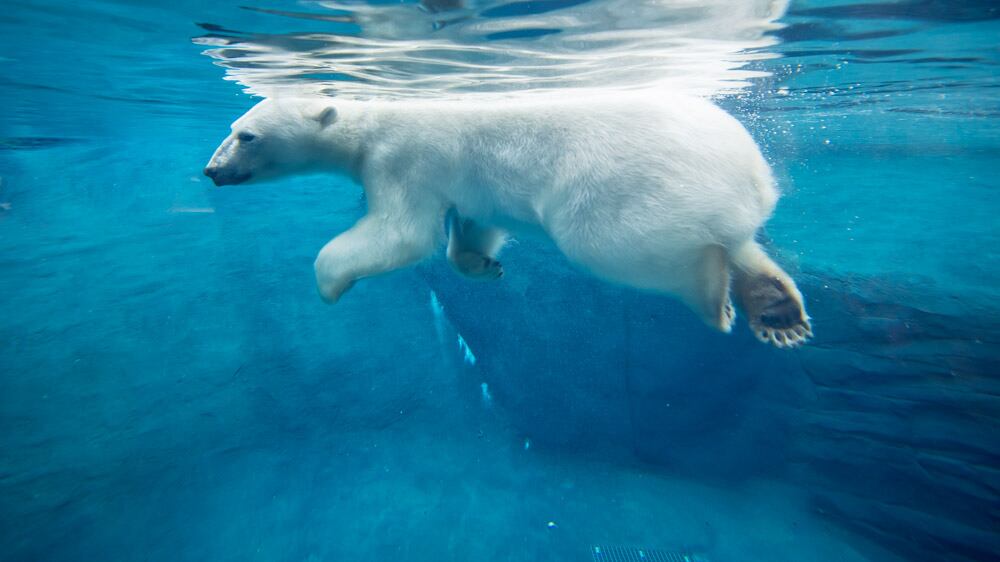Amid the competitive frenzy of American zoos, most evaluation standards rate Oregon’s solidly middle of the pack regarding big-ticket apex predators. Our lions aren’t more ferocious, our tigers aren’t swifter or smarter, but…well, our polar bears do cooperate very well.
The Oregon Zoo’s dearly departed twins Conrad and Tasul entered the record books a decade ago as the first polar bears to have blood drawn without being anesthetized. Beyond that, they also became the first captive bears to allow trainers to administer eye drops and brush their teeth. (Presumably, they would have also been the first bears audited had their health not suffered—both were euthanized within months of each other at nearly 32 years of age in 2016 following terminal illness diagnoses, and Conrad died as the oldest male polar bear in North American captivity.)
Government officials took notice of the two and began approaching the Oregon Zoo about utilizing their unusual amenability to provide dependable measurements and statistical norms otherwise near impossible to gauge.
“We just trained the bear to accept the needles, and once we were able to have blood drawn from our bears voluntarily, that opened the door for conservationists and research teams,” says zookeeper Amy Hash. “I’ve never studied polar bears in the wild, but from our U.S. Geological Survey contacts, I know it’s very expensive and very time consuming.”
And the Oregon Zoo remains a preferred location to research polar bears. This year, representatives of the U.S. Geological Survey, U.S. Fish and Wildlife Service, and National Park Service tested new 3D laser-guided scanners on the latest polar pair, Nora and Amelia Gray. They hope to use the technology to weigh and monitor bears in the wild.

